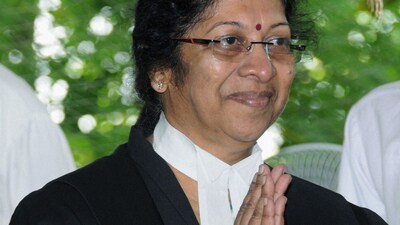India, a nation that prides itself on being the world’s largest democracy, is once again facing difficult questions about gender equality—this time directed at its judiciary. The Supreme Court of India, often seen as the guardian of constitutional rights and a defender of the powerless, is under intense scrutiny for what critics describe as a glaring gender imbalance. With only one female judge currently serving among its bench of over thirty, many are calling the court a “men’s club” that does not reflect the diversity and inclusivity India claims to champion. This criticism has sparked a broader conversation about women’s representation in the judiciary, the cultural and structural barriers that hinder their rise, and the consequences of such limited female participation in a system responsible for shaping the country’s laws and protecting civil liberties.
- The Gender Imbalance in India’s Supreme Court
- Why Representation Matters in the Judiciary
- Voices of Criticism: Why the Supreme Court is Called a “Men’s Club”
- Historical Progress and Stalled Momentum
- Barriers to Women Entering the Judiciary
- 1. Gender Bias in Legal Profession
- 2. Work-Life Balance Challenges
- 3. Collegium System of Appointments
- 4. Lack of Institutional Support
- Global Comparison: How India Stacks Up
- The Case for Reform
- Public Reactions and Societal Implications
- Looking Ahead: Can India Build a More Inclusive Judiciary?
- FAQs
- Why is India’s Supreme Court being called a “men’s club”?
- Has India ever had a female Chief Justice?
- What are the main barriers preventing women from becoming judges in India?
- How does India compare to other countries in terms of women judges?
- What reforms are being suggested to improve women’s representation in the judiciary?
- Conclusion
The debate is not just about numbers. It’s about the optics of justice, the fairness of a system in which half of India’s population finds its perspectives barely represented, and the systemic biases that reinforce patriarchal control over legal institutions. This article explores the historical context of women in India’s top court, the voices demanding reform, and why achieving gender diversity in the judiciary is not just a matter of representation but a necessity for a more equitable society.
The Gender Imbalance in India’s Supreme Court
The Supreme Court of India currently has 34 sanctioned seats, yet only one is occupied by a woman judge. This stark underrepresentation stands in contrast to India’s rapidly evolving social and political landscape, where women are increasingly visible in politics, academia, entrepreneurship, and civil service. While women have made notable gains in many sectors, the judiciary appears to be lagging behind, raising serious questions about inclusivity in one of the country’s most powerful institutions.
The lack of women judges is not a new problem. Since its establishment in 1950, the Supreme Court has seen fewer than a dozen women appointed to its bench. For over two decades after independence, the court was entirely male. The first female justice, Justice Fathima Beevi, was appointed in 1989, a landmark moment that was celebrated as a sign of progress. However, more than three decades later, the presence of women in the apex court remains painfully thin.
This pattern reflects a wider issue across India’s judicial hierarchy. According to data from the Ministry of Law and Justice, women constitute less than 12% of judges in high courts and less than 30% in subordinate courts. These figures suggest a pipeline problem, where fewer women ascend through the ranks to reach the higher judiciary.
Why Representation Matters in the Judiciary
Critics argue that the absence of women judges in the top court has significant implications for how justice is interpreted and delivered. The judiciary is not just an interpreter of law but a guardian of rights, and representation within it impacts its sensitivity to issues such as gender-based violence, workplace harassment, reproductive rights, and property disputes that disproportionately affect women.
Having female judges on the bench ensures that legal interpretation is enriched with diverse perspectives. For example, landmark rulings in India related to sexual harassment, domestic violence, and gender discrimination have often seen greater advocacy and sensitivity when female judges were part of the bench. Studies globally also suggest that female judges bring unique approaches to cases involving social justice and gender rights.
When half of the population is inadequately represented in the judiciary, it erodes public trust in the fairness of the system. It creates a perception that women’s voices are secondary in matters of constitutional law and justice. This undermines the very principles of equality that the Constitution guarantees.
Voices of Criticism: Why the Supreme Court is Called a “Men’s Club”
The phrase “men’s club” has been used repeatedly by activists, legal scholars, and civil society groups to describe the male-dominated environment of India’s Supreme Court. Critics argue that this gender imbalance is symptomatic of deeper structural problems, including patriarchal biases in judicial appointments, lack of mentorship for women in the legal profession, and insufficient institutional support for women lawyers to rise through the ranks.
Several retired judges and legal experts have also acknowledged this problem. Justice Indira Banerjee, one of the very few women to serve on the Supreme Court, previously highlighted how women lawyers are often overlooked for top positions despite their competence. Similarly, gender rights activists argue that the collegium system of judicial appointments—which involves senior judges selecting new appointees—has failed to prioritize diversity.
Media coverage has amplified the criticism, with editorials pointing out the irony of a nation that frequently projects itself as progressive on women’s rights but continues to have an apex court that does not reflect gender equality in its own ranks.
Historical Progress and Stalled Momentum
The appointment of Justice Fathima Beevi in 1989 was a watershed moment for India. It signaled that the judiciary was opening up to women, albeit slowly. Since then, a handful of women have followed, including Justices Sujata Manohar, Ruma Pal, Gyan Sudha Misra, R. Banumathi, Indira Banerjee, and Hima Kohli. However, the numbers remain dismally low compared to male appointees.
The missed opportunity lies not only in the low numbers but also in the failure to ensure continuity. For example, there have been several periods in history when the court had no women at all. The absence of female voices on the bench during critical times in India’s legal history has left a gap in jurisprudence that could have been more nuanced with gender-inclusive perspectives.
Barriers to Women Entering the Judiciary
The reasons for women’s underrepresentation in the judiciary are complex and multifaceted. Some of the key barriers include:
1. Gender Bias in Legal Profession
The legal profession in India has historically been male-dominated. Senior positions in law firms, bar associations, and judiciary often favor men due to entrenched stereotypes that question women’s ability to handle demanding litigation careers.
2. Work-Life Balance Challenges
The judiciary requires long working hours and the ability to travel frequently, conditions that disproportionately affect women due to societal expectations of caregiving and domestic responsibilities.
3. Collegium System of Appointments
India’s collegium system, which decides judicial appointments, has often been criticized for being opaque and exclusive. The absence of clear diversity guidelines means women are frequently overlooked.
4. Lack of Institutional Support
From maternity benefits to workplace harassment redressal, institutional frameworks within the judiciary are inadequate, discouraging many women from pursuing long-term careers in law.
Global Comparison: How India Stacks Up
When compared to other democracies, India’s record on women’s representation in the judiciary appears weak. For instance, the U.S. Supreme Court currently has four female justices out of nine, while the UK Supreme Court has women constituting about one-third of its judges. In Canada, women make up nearly 40% of the Supreme Court bench. Even smaller democracies like South Africa and New Zealand have made significant progress in ensuring gender balance at the highest judicial levels.
India’s lagging representation not only tarnishes its image internationally but also suggests a failure to keep pace with global trends toward inclusivity.
The Case for Reform
Calls for reform are growing louder. Several proposals have been put forward to address gender imbalance in the judiciary:
- Reservation for Women in Judiciary: Advocates suggest a fixed quota for women in higher judiciary appointments to ensure consistent representation.
- Transparency in Collegium Decisions: Making the appointment process more transparent with explicit diversity criteria could help break the cycle of male dominance.
- Mentorship Programs: Encouraging senior judges and legal institutions to mentor women lawyers can help prepare them for judicial roles.
- Workplace Reforms: Providing better maternity benefits, flexible work policies, and stronger harassment redressal mechanisms within the judiciary could attract and retain more women.
Public Reactions and Societal Implications
The public outcry over the Supreme Court’s lack of women judges reflects a broader demand for equality in Indian society. Social media has played a pivotal role in amplifying this debate, with hashtags and campaigns calling for more women judges. Civil society groups argue that diversity in the judiciary is not just symbolic but essential for substantive justice.
Moreover, the lack of representation has implications beyond the legal profession. It signals to women in other fields that the glass ceiling remains firmly intact, reinforcing patriarchal barriers across society.
Looking Ahead: Can India Build a More Inclusive Judiciary?
India stands at a crossroads. As the country aspires to be a global leader in democracy and development, the inclusivity of its institutions will play a defining role in shaping its credibility. A judiciary that reflects the diversity of the population it serves is not just desirable but necessary for fair and just governance.
The appointment of more women judges would not only strengthen the legitimacy of the judiciary but also inspire future generations of women lawyers and professionals. It would signal that the system is open, fair, and committed to equality—a principle enshrined in India’s Constitution.
FAQs
Why is India’s Supreme Court being called a “men’s club”?
Because out of over thirty judges, only one is a woman. This extreme gender imbalance reflects systemic issues in appointments and contributes to the perception of the court as male-dominated.
Has India ever had a female Chief Justice?
No, India has never appointed a woman as the Chief Justice of the Supreme Court, despite having had several capable women judges over the decades.
What are the main barriers preventing women from becoming judges in India?
Key barriers include gender bias in the legal profession, lack of transparency in judicial appointments, challenges in balancing professional and domestic responsibilities, and insufficient institutional support.
How does India compare to other countries in terms of women judges?
India lags behind many democracies. For example, the U.S. Supreme Court has nearly half its bench occupied by women, while Canada and South Africa have significantly higher female representation.
What reforms are being suggested to improve women’s representation in the judiciary?
Reforms include introducing reservations for women in higher judiciary, making collegium appointments more transparent with diversity goals, mentorship for women lawyers, and workplace reforms within the judiciary.
Conclusion
The Supreme Court of India, long revered as the custodian of justice, is facing a legitimacy crisis of its own making by failing to adequately represent women. The label of a “men’s club” is not just a rhetorical jab—it is a wake-up call for urgent reform. True justice cannot be delivered in a system that does not mirror the diversity of its society. Ensuring more women in the judiciary is not merely about representation; it is about enriching the quality of justice, reinforcing public trust, and fulfilling the constitutional promise of equality. India’s democracy will only be as strong as its institutions, and the judiciary, as its moral compass, must lead by example.







